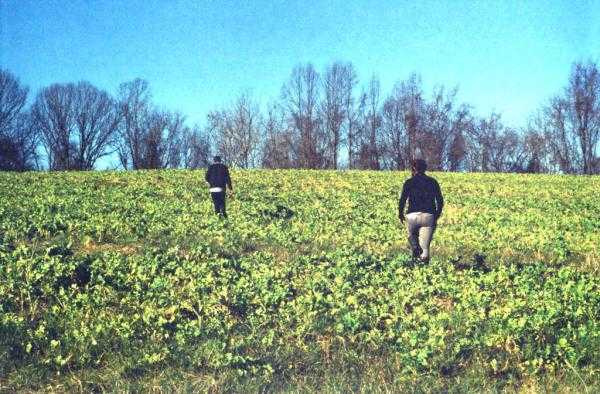
We are excited to announce the winner of the fourth week of our competition: Tara Whitsitt in New York! Tara shared this photo and caption about cover crops in Maryland:

We are excited to announce the winner of the fourth week of our competition: Tara Whitsitt in New York! Tara shared this photo and caption about cover crops in Maryland:
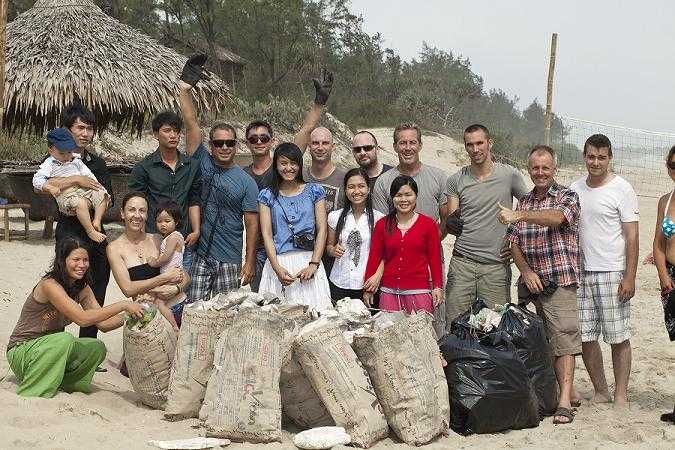
We are excited to announce the winner of the fifth week of our competition: Hans van der Broek in Hoi An, Vietnam!
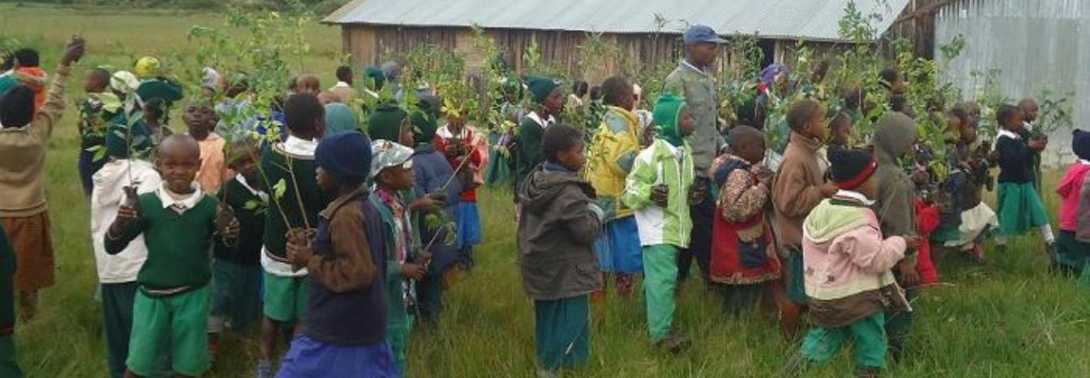
It was certainly a challenge after receiving so many fantastic entries, but the Connect4Climate Weekly Competition panel of judges has reached a decision! Congratulations to James Kamau Wangu in Kenya! We will be mailing your solar backpack to you shortly!
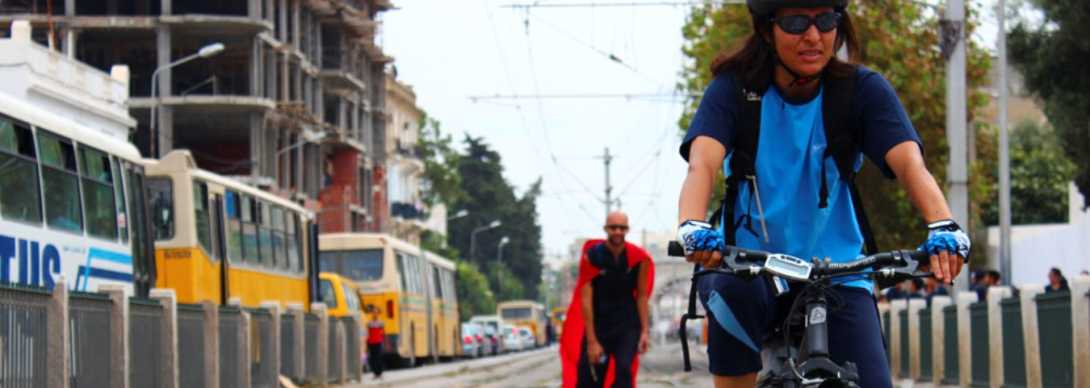
These are the winners divided by group age.
<p><strong>1st Place in the 13-17 age category</strong></p>
<p><strong>Dump site #1 - Oscar Atoli – Kenya -</strong> This is the biggest dumpsite in Kenya. Since the dumpsite was established the air pollution is increasing every day because of waste disposal, but the women and street kids never mind, if the pollution is affecting others tenants leaving near the dumpsite. The dumpsite is full of women and street children. Since 10 years ago. But with the population of Kenya the dumpsite is increasing day by day and now is said to have reached 50,000 by this year, these is because of lack of employment, shelter and the availability of essential services shrinking, the future for these women and children looks bleak.</p>
<p style="text-align: center;"><strong><img alt="" src="/sites/default/files/images/Oscar_Atoli.JPG" style="width: 1000px; height: 562px;" /></strong></p>
<p><strong>2nd place winner in the 13-17 age category</strong></p>
<p><strong>Clean Environmement Needed for Healthy Living</strong> - Bubacarr Baldeh – Gambia - Rubbish collection should be a priority for every individual.</p>
<p style="text-align: center;"><img alt="" src="/sites/default/files/images/Bubacarr_Baldeh.JPG" style="width: 1000px; height: 750px;" /></p>
<p><strong>3rd place winner in the 13-17 age category</strong></p>
<p><strong>Feel the Oxygen</strong> - Phomolo Rangoajane - Mants'ase Children's Home – Lesotho - Green leaves remove carbon from the air and give off life sustaining oxygen.</p>
<p style="text-align: center;"><img alt="" src="/sites/default/files/images/Phomolo_Rangoajane.jpg" style="width: 1000px; height: 750px;" /></p>
<p style="text-align: center;"><strong><em>*View this video by 3rd place winner Mutetelenu Kalama as he speaks about his photo submission</em></strong></p>
<p>[video:https://www.youtube.com/watch?v=VNkKBDwhQEo]</p>
<p> </p>
<p><strong>1st place winner in the 18-24 age category</strong></p>
<p><strong>Change - </strong>Amine Ghrabi - Tunisia- Tunisians or the first 2011 revolutionnaries went out into the streets on the 24th september 2011 calling leaders to act in order to reduce the amount of carbon dioxide (CO2) in the atmosphere. A bicycle parade was organized and over a hundred citizens took part to the event. Although there is no clear and secure bikways that could be used, they were biking and rollering all the day around Tunis in a call for a clean energy future. Everyone of them remember very well how the Tunisian Revolution had proven that change can come quickly.</p>
<p style="text-align: center;"><strong><img alt="" src="/sites/default/files/images/Amine_Ghrabib.jpg" style="width: 1000px; height: 667px;" /></strong></p>
<p>The photo shows two of them in the heart of the old city using the tramway lines of Bab El Khadhra district [The green door]. The background shows the traffic jam and the famous yellow buses that make the streets of the city so crowded.</p>
<p style="text-align: center;"><strong>*View this video by first place winner Amine Ghrabi regarding his photo submission.</strong></p>
<p>[video:https://www.youtube.com/watch?v=PDh7wF2QhOY]</p>
<p> </p>
<p><strong>2nd place winner in the 18-24 age category</strong></p>
<p><strong>Abandoned Homes and Active Factories - </strong>Nourine Shenawy – Egypt - </p>
<p>The sad thing that is not shown in this picture is that other than these two buildings, there is an entire residential compounds with schools, mousques and chuches, and hospitals, even with the intoxicating fumes and the poisonous wastes coming out of the factories. Egypt has no architectural plan, a factory can be built in the middle of the city since there is a space for it, and with the increase of the population in Alexandria in the last thrity years, flats and houses are built near the factories regardless of health hazards. My question is who has the right to stay? The factories that build, or the people that live? Should people abandon their homes? Or is home just another house one can leave to live a humane life with a clean atmosphere?</p>
<p style="text-align: center;"><img alt="" src="/sites/default/files/images/Nourine_Shenawy.JPG" style="width: 1000px; height: 602px;" /></p>
<p><strong>3rd place winner in the 18-24 age category</strong></p>
<p><strong>Poor Garbage Collection: A Health Hazard </strong>- Mutetelenu Kalama – Zambia - </p>
<p>With the rising of industries, Zambia is experiencing poor garbage collection including big cities were it can be easy to collect waste.<br />
In turn a lot of children have been affected because they are always found playing on top of this waste, hence a lot of deaths have been reported because of poor garbage collection, and so cilmate change hast not been left out.</p>
<p style="text-align: center;"><img alt="" src="/sites/default/files/images/MUTETELENU_KALAMA.jpg" style="width: 536px; height: 559px;" /></p>
<p style="text-align: center;"><strong><em>*Watch 3rd place winner Mutetelenu Kalama speak about her photo submission</em></strong></p>
<p>[video:https://www.youtube.com/watch?v=oRBK3g6FnP4]</p>
<p><strong>1st place winner in the 25-35 age category</strong></p>
<p><strong>Homemade Soccer Ball - Dumpster on Fire</strong> - Julius Mwelu – Kenya - A young man in Nairobi plays with a home-made soccer ball next to a burning dumpsite emitting smoke, which affects the environment.</p>
<p style="text-align: center;"><img alt="" src="/sites/default/files/images/Julius_Mwelu.jpg" style="width: 1000px; height: 669px;" /></p>
<p><strong>2nd place in the 25-35 age category</strong></p>
<p><strong>Junk Market </strong>- Wilson Fernandes da Silva – Angola - It is sad to know that everything we do for survival but little or a lot that we need to live is always better for an even fight with ourselves. Many people eat the products sold in this market garbage in the neighborhood of São. Paul in Luanda. A few meters from the city administration this scenario is seen by thousands of people over the same old policies that hinder Africa deteriorate in termsof better health. If management does not have the money residents can contribute to private companies is clear that a solution but finally the policies make us wait.</p>
<p style="text-align: center;"><img alt="" src="/sites/default/files/images/Wilson_da_Silva2.jpg" style="width: 1000px; height: 667px;" /></p>
<p><strong>3rd place winner in the 25-35 age category</strong></p>
<p><strong>The African Forum for Mobility and Development </strong>- Naigaga Kawuma Christine – Uganda - Using cycling as a mitigation measure to climate change in Uganda and especially Kampala. We are a group of Non governmental organizations to conserve the environment.</p>
<p style="text-align: center;"><img alt="" src="/sites/default/files/images/The_african_forum_for_mobility_and_development.JPG" style="width: 1000px; height: 750px;" /></p>
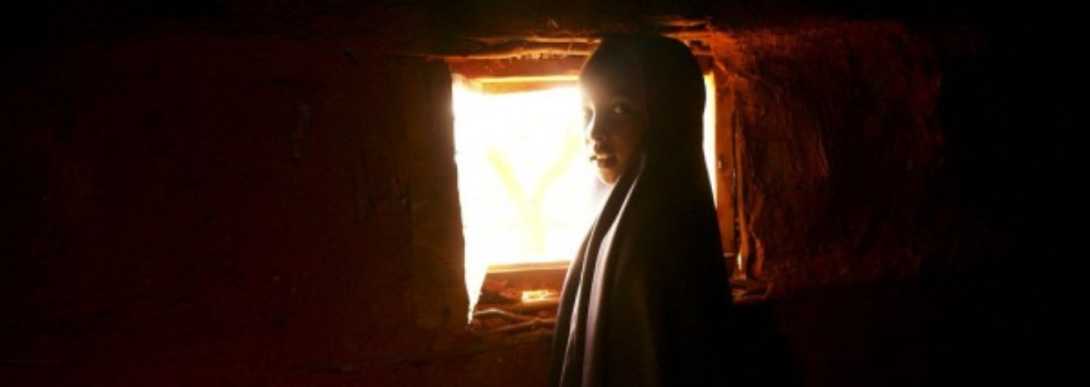
Look at the awarded photographies.
<p style="text-align: center;"><strong><img alt="" src="/sites/default/files/images/Ndimby_Andriantsoavina.jpg" style="width: 800px; height: 1111px;" /></strong></p>
<p><strong>1st place in the 25-35 age category</strong></p>
<p><strong>Women at Work in the Forest -</strong> Ndimby Andriantsoavina, Madagascar - All works related to food preparation is dedicated to women. So women have to fetch the wood in the forest to prepare the lunch.</p>
<p style="text-align: center;"><strong><em>*Watch this video by 1st place winner Ndiby Andriantsoavina speak about his photo submission</em></strong></p>
<p>[video:https://www.youtube.com/watch?v=5xYq4YKOE6U]</p>
<p> </p>
<p><strong>2nd place in the 25-35 category</strong></p>
<p><strong>Rural women, Renewable Energy and ICTs -</strong> Herbert Lwanga, Uganda</p>
<p>In a typical Ugandan setting, women play the roles of digging, fetching water, doing household work, cooking, hosting visitors and, above all, bearing children i.e. they are movers of the “caring economy” which however, carries no definite rewards except that they benefit from occasional “thank you” expressions from their husbands, children, visiting neighbours, relatives, and community members. To-date however, these roles are shifting very fast, thanks to the onset of Information Communication Technologies and technology in general. </p>
<p>As can be attested by the attached photograph, the lady seen operating this solution is rural based and apart from providing an alternative energy source, she generates continuous revenue hence, realizing her entrepreneurial dream; with this revenue she is empowered to pay school fees for her children and, supplementing the food security budget for her household.</p>
<p>She also plays the role of providing the rural farming communities with a constant energy source that enables them to use their phones uninterrupted thus, leading them to access and benefit from information that addresses their personal, farming and community needs. Furthermore, the photograph is a testimony of the combined role of women and youth in developing, producing and applying ICTs for transforming especially rural communities i.e. the LOG`EL Commercial, solar phone-charger is produced and disseminated by the LOG`EL team (mainly comprising the youth) and it is being commercially utilized by a female operator.</p>
<p>This technology solution has the potential for replication in other countries for, apart from being an alternative source of affordable energy, it has viable prospects for reducing poverty, managing climate change, reducing environmental degradation and uplifting the convenience for humanity in general. Inquiries for collaboration are welcome.</p>
<p style="text-align: center;"><img alt="" src="/sites/default/files/images/HERBERT_LWANGA_1.jpg" style="width: 800px; height: 627px;" /></p>
<p><strong>3rd place in the 25-35 age category</strong></p>
<p><strong>And Still Hope by Anab Garab Somali/America</strong></p>
<p>I took this photo of a young girl named Ikraam on September 12th, 2011, in the Gedo region of Somalia.I went with Markabley Relief and Development Trust a group distributing food as emergency relief to parts of the region. Ikraam is looked after by her aunt who does her best to care for young Ikraam. She was very interested in learning English so I taught her a few words while I was there. I visited the local school and spoke with teachers and Ikraams aunt who informed me that although they are quite happy to have a school in the area unfortunately it is only open for 2 hours a day. A school teacher said they teach seven subjects at the school English being one of them. But two hours a day isn't enough.</p>
<p style="text-align: center;"><img alt="" src="/sites/default/files/images/Anab_Garad.jpg" style="width: 800px; height: 535px;" /></p>
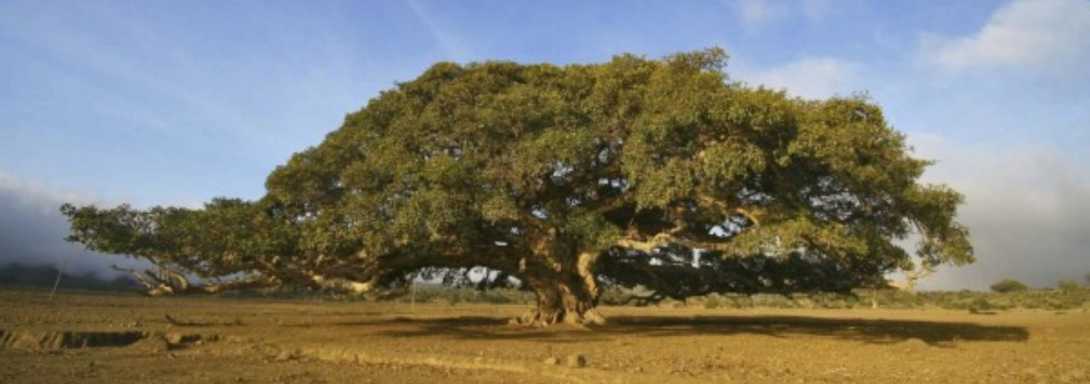
Winners: Forest, 13-17 years old
<p><strong>1st place in the 18-24 age category: Regrowth: The New and the Old </strong>- Serah kimundu, Kenya</p>
<p>This picture was taken at the edge of the Aberdare ranges (see background). This was originally part of the vast Aberdare forest found in the Central part of Kenya. The residents who cut the trees for firewood and farmland have diminished the forest. The picture shows the old original trees and the newly planted trees that have been planted to revamp the forest. The brown ‘soil’ is actually sawdust that was accumulated from all the cutting of the trees. This has affected the climate as the weather and seasons have now become unpredictable thus affecting the farming in the area. Solutions have indeed been found as you can see in the picture as new trees are being planted. The Kenya forestry also prosecute and fine residents found destroying the forest.</p>
<p style="font-size: 13.008px; line-height: 20.0063px; text-align: center;"><img alt="" src="/sites/default/files/images/serah_kimundu_.jpg" style="width: 800px; height: 600px;" /></p>
<p><strong>2nd place in the 18-24 age category: A tree planted is a boost </strong>- Dan Njiena, Cameroon</p>
<p>Answer the question of how climate change affects our lives, those of our friends in our community? It first become aware, it is first noted that climate change is primarily caused by a disorder coportementale and the expansionist desires of humans are increasing day by day 's This is why we can notice that all ls damage it causes are pollution, massive deforestation, desert encroachment, scarcity of drinking water and pout in the world is made up to 97% water and that is why it is not the safe from natural disasters.<br />
However, admittedly some young Africans have begun to wake up and last vaccances school, they each planted a tree not far from the Ahmadou Ahidjo Stadium in Yaounde Omnipsorts in Cameroon sotien NGO Mi-plus and the Ministry Sports. they realized that a tree planted is a boost that is given to the fight against global warming, desertification, an abundance of drinking water and less than ene disaster.</p>
<p style="font-size: 13.008px; line-height: 20.0063px; text-align: center;"><img alt="" src="/sites/default/files/images/Dan_Njiena3.JPG" style="width: 800px; height: 1066px;" /></p>
<p style="text-align: center;"><strong>*View this video by 2nd place winner by Dan Njiena regarding his photo submission</strong></p>
<p>[video:https://www.youtube.com/watch?v=xZq71tALAL0]</p>
<p> </p>
<p><strong>3rd place Greening schools campaign by Rose Yvonne, Kenya</strong></p>
<p>There is a huge gap in our knowledge on the impact of climate change in East Africa. Deforestation is not treated as a major cause of the change in climate,whether its because of ignorance or poverty that makes us only think of how to burn charcoal to provide for our families; their is an urgent need to let people know of the dangers behind their actions. The impacts are being felt all over the country from severe droughts leading to loss of lives to floods destroying what we hoped would be bumper harvests. The only best way to ensure that we escape from such calamities would be to educate and encourage students of all ages to be involved in the campaign against deforestation, as trees whether we would like to admit it or not are the surest answer to a safer world .If they embrace the attitude early in life, it would be the best pass to a greener and a more climate friendly future.</p>
<p style="font-size: 13.008px; line-height: 20.0063px; text-align: center;"><img alt="" src="/sites/default/files/images/rose_yvonne.JPG" style="width: 800px; height: 600px;" /></p>
<p><strong>1st place in the 25-35 age category: Palm trees grave - </strong>Adil Moumane, Morocco</p>
<div>A field in Draa Palme Grove (Zagora-Morocco) was destructed by fusaruim disease, drought, and sand encroachment, and has become a mass Grave for palme trees, so we sound the alarm to protect this environmental heritage from extinction.</div>
<div> </div>
<div style="text-align: center;"><img alt="" src="/sites/default/files/images/legacy/Adil_Moumane.jpg" style="width: 800px; height: 788px;" /></div>
<div>
<div style="text-align: center;"><strong>*View this video by 1st place winner Adil Moumane regarding his photo submission</strong></div>
<div style="text-align: center;"> </div>
<div>[video:https://www.youtube.com/watch?v=ZJa352URucI]</div>
<div> </div>
<div>
<p><strong>2nd place in the 25-35 age category:</strong> <strong>Alsunut Forest </strong>- Ala Kheir, Sudan</p>
<div>It is the last forest in Khartoum, located on the white Nile not far from the city centre, it is home for many birds and monkeys it is a nice place that people spend their evenings at watching the sun go down. The forest now is disappearing, as people started cutting trees on one end, and the plastic wastes are contaminating most of it.Those were the main reasons killing this forest. Now the worst have come, the government sold Alsunut forest to a business man who is planning to transform it to a private park and a golf yard “which means cutting down most of those trees”</div>
<div> </div>
<div style="text-align: center;"><img alt="" src="/sites/default/files/images/legacy/AlsunutForest.jpg" style="width: 800px; height: 531px;" /></div>
<div style="text-align: center;"> </div>
<div>
<p><strong>3rd place in the 25-35 age category:</strong> <strong>Forest </strong>- David Mbuthia Mwangi, Kenya</p>
<div>Illegal logging reduces chances of natures surviving.</div>
<div> </div>
<div style="text-align: center;"><img alt="" src="/sites/default/files/images/legacy/David_Mbuthia_Mwangi.JPG" style="width: 800px; height: 540px;" /></div>
<div style="text-align: center;"> </div>
<div style="text-align: center;">
<div><strong>*View this video from 3rd place winner David Mbuthia Mwangi regarding his photo submission</strong></div>
<div> </div>
<div style="text-align: left;">[video:https://www.youtube.com/watch?v=Km9Bmi_zRIA]</div>
</div>
</div>
</div>
</div>
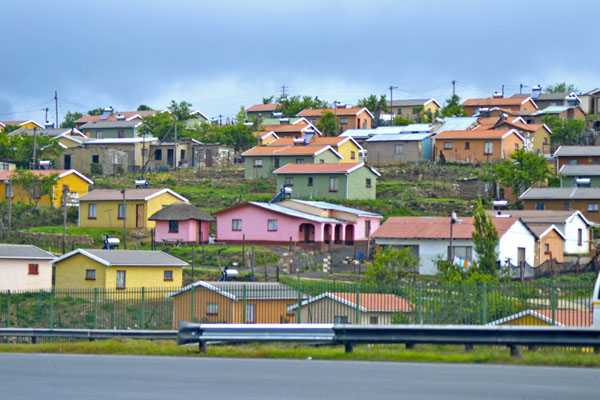
1st place winner 13-17 age category
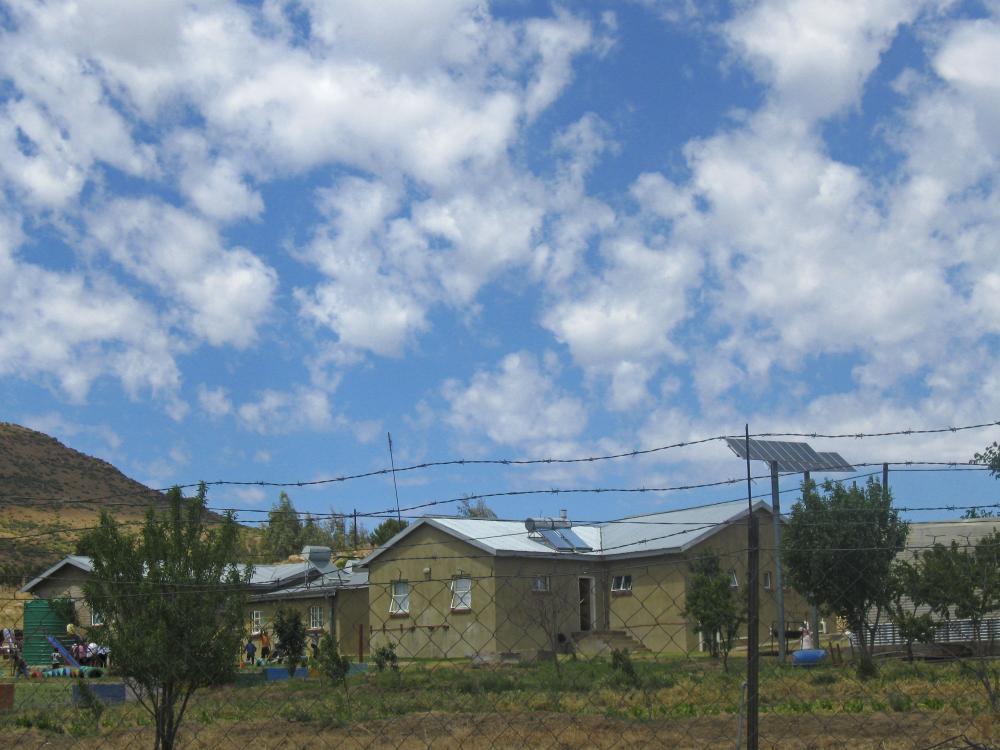
<p><strong>Solar Panels, The Sunny Energy – Dina Osman – South Africa </strong></p>
<p>Most of these houses are low cost housing and some are government provided homes yet almost all of them have solar panels fitted on their roofs. Initiatives like this are great not only in providing electricity for the people but doing it in a sustainable manner. Projects like this should be spread all over and governments should encourages the people into adopting sustainable ways of generating electricity.</p>
<p style="font-size: 13.008px; line-height: 20.0063px; text-align: center;"><img alt="" src="/sites/default/files/images/Dina_Osman2.jpg" style="width: 1000px; height: 667px;" /></p>
<p><strong>2nd place winner 18-24 age category</strong></p>
<p><strong>Improved Cooking Stoves – Alphonse Karenzi –Rwanda </strong></p>
<p>This stove is easily made from local materials. It surely saves up to 85% of firewood compared to traditional stoves and reduces smoke emission significantly.</p>
<p style="font-size: 13.008px; line-height: 20.0063px; text-align: center;"><img alt="" src="/sites/default/files/images/Alphonse_KARENZI_.JPG" style="width: 1000px; height: 750px;" /></p>
<p><strong>3rd place winner 18-24 age category</strong></p>
<p><strong>Tire burning for cooking – Malawi - Violet Mojo</strong></p>
<p>A lack of access to clean household energy in developing countries forces more than a third of humanity-2.4 billion people to cook and heat their homes by burning wood, dung and crop waste.The families face an impossible dilemma: cook with solid fuels and suffer health consequences or go without uncooked meal. Despite this, smoke claim the lives of nearly 800,000 children each year and emit gases into the atmosphere contributing to climate change and global warming. Thus the need for sustained and environmental friendly energy sources</p>
<p style="font-size: 13.008px; line-height: 20.0063px; text-align: center;"><img alt="" src="/sites/default/files/images/Violet_mojo.jpg" style="width: 405px; height: 544px;" /></p>
<p><strong>Energy in Rwanda – Teddy Kinyanjui – Kenya - </strong><br />
Pilot testing chrocal briquette making out of papryus and peat for the min.of energy in Rwanda.</p>
<p style="text-align: center;"><br />
<img alt="" src="/sites/default/files/images/teddy_kinankuji.jpg" style="width: 604px; height: 453px;" /></p>
<p style="text-align: center;"><em><strong>*Watch this video from 1st place winner Teddy Kinyanjui speak about his photo submission</strong></em></p>
<p>[video:https://www.youtube.com/watch?v=BMkcDggK4UY]</p>
<p> </p>
<p><strong>2nd place winner 25-35 age category</strong></p>
<p><strong>Claystoves - Use Less Firewood and Conserve Energy! - Asimenyekyala Nthakomwa – Malawi -</strong> <br />
Claystoves are one efficient energy saving technology that should be promoted if we are to promote sustainable use of forest resources. One woman testified to using the same bundle of firewood for two weeks with a claystove while she could use it for a week when she was using the three stone traditional stove method which is common in rural communities. Lets us empower the women who are the ones mostly fetching firewood for the homes by training them in claystove making which they can also use as an income generating activity.</p>
<p style="font-size: 13.008px; line-height: 20.0063px; text-align: center;"><img alt="" src="/sites/default/files/images/Claystoves.JPG" style="width: 404px; height: 659px;" /></p>
<p><strong>3rd place winner 25-35 age category</strong></p>
<p><strong>I Prefer My Horse – Azzedine Jamal – Morocco -</strong> <a href="mailto:contact@azzedinejamal.com">contact@azzedinejamal.com</a><br />
A nomad in the desert preferred to abandon his car to return to the horse: ”gasoline? is too expensive,” he said.</p>
<p style="font-size: 13.008px; line-height: 20.0063px; text-align: center;"><img alt="" src="/sites/default/files/images/Azzedine_Jamal.jpeg" style="width: 400px; height: 300px;" /></p>
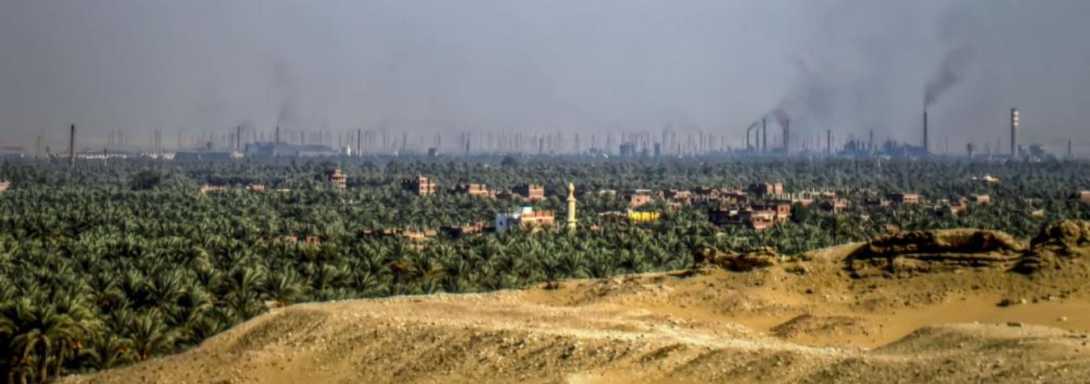
Winners: Agriculture, 13-17 years old
1st Place in the 13-17 age category
<p style="font-size: 13.008px; line-height: 20.0063px; text-align: center;"><strong><img alt="" src="/sites/default/files/images/Fertility_countdown.jpg" style="width: 1000px; height: 750px;" /></strong></p>
<p><strong>1st place in the 18-24 age category</strong></p>
<p><strong>Fertility Countdown</strong> - Mohamed Samad – Egypt - This relatively remote piece of Egyptian fertile land used for agriculture is threatened by Air pollution, urbanization and desertification as a result of climate change</p>
<p style="font-size: 13.008px; line-height: 20.0063px; text-align: center;"><img alt="" src="/sites/default/files/images/One_hen_campaign.JPG" style="width: 1000px; height: 750px;" /></p>
<p><strong>2nd place in the 18-24 age category</strong></p>
<p><strong>One Hen Campaign Project - James Makini – Kenya - </strong></p>
<p>A photo I took from the field where we train farmers on agribusiness, environmental conservation,entrepreneurship and value chain analysis from a practical perspective, whereby each member is given a hen and a cage as a loan (One Hen Campaign Project) and after 6 months they surrender 2 chicks (once) to the programme for onward lending to other groups and sustainability of the programme.</p>
<p><strong>*Watch this video from 2nd place winner James Makini explaining the importance of his photo</strong></p>
<p>[video:https://www.youtube.com/watch?v=X6cN_1fTlno]</p>
<p> </p>
<p>On Environmental conservation, IEP has come up with a very innovative way of training the youth and women to desist from using traditional cages that consume a lot of trees and instead use a modern cage covered with a wire mesh hence saving trees. From the hens droppings we train youth and women how to make composite manure which is organic and helps them conserve the soil that has been depleted by use of chemical fertilizers.</p>
<p style="text-align: center;"><img alt="" src="/sites/default/files/images/The_golden_islandb.jpg" style="width: 1000px; height: 672px;" /></p>
<p><strong>3rd place in the 18-24 age category</strong></p>
<p><strong>The Golden Island - Andrew A. Shenouda – Egypt </strong></p>
<p>Gezieret el Dahab or The Golden Island is an agricultural area located near downtown Cairo. Although it's isolated to some extend from Cairo Noise, it was threatened one day to swept and change to a business district.</p>
<p style="font-size: 13.008px; line-height: 20.0063px; text-align: center;"><strong><img alt="" src="/sites/default/files/images/Kisakye_Mayanja.JPG" style="width: 1000px; height: 750px;" /></strong></p>
<p><strong>1st place in the 25-35 age category</strong></p>
<p><strong>Forest For Gardening - Kisakye Mayanja- Uganda - </strong><br />
This picture, taken in Kiboga district shows a woodland turned into an agricultural field. Agricultural land is diminishing as a result of population explosion in many areas of the world, but, in this region of Uganda, encroachment is caused by soils that have been over cultivated. Farmers there try to seek better soils from forested land, they burn fell the trees before cultivating. The ferttile soils in the forests can easily leach and will soon lose fertility, leading to further encroachment and change in the micro climate of such a place.</p>
<p style="font-size: 13.008px; line-height: 20.0063px; text-align: center;"><img alt="" src="/sites/default/files/images/Stephanie_Rabemiafara5.jpg" style="width: 1000px; height: 667px;" /></p>
<p><strong>2nd place in the 25-35 age category</strong></p>
<p><strong>Madagascar, Inland, father and son posing in front of rice fields. Stephanie Rabemiafara – Madagascar -</strong></p>
<p>Traditional farming methods vary from one ethnic group or location to another, according to population density, climate, water supply, and The most intensive form of cultivation is practiced among theBetsileo and Merina groups of the central highlands, where population densities are the highest. At the other extreme are the extensive slash-and-burn methods of brush clearing and shifting cultivationin the south and the east. The price of rice, the staple food in Madagascar, has doubled in the past two years, forcing residents in the capital, Antananarivo, to halve their consumption.</p>
<p><strong>3rd place in the 25-35 age category</strong></p>
<p style="font-size: 13.008px; line-height: 20.0063px; text-align: center;"><br />
<img alt="" src="/sites/default/files/images/Brice_Blondel.jpg" style="width: 1000px; height: 667px;" /></p>
<p><strong>Cattle Farmer from Paua – Brice Blondel – France - </strong></p>
<p>Paoua, in the North Ouest of the Central African Republic is subjected to chronic insecurity. People regularly have to flee the town to hide in the bush for weeks, sometimes months, in order to avoid being attacked by rebels or bandits.Not many people are able to save cattle, which is often stolen by armed men. This man's house was partly destroyed, as were many others in his neighbourhood, but he still owned that one cow. It is him who came to me and ask that I take his picture.</p>
<p><strong>*Watch this video from 3rd place winner Brice Blondel explaining the importance of his photo</strong></p>
<p>[video:https://www.youtube.com/watch?v=dwScvXgfnpI]</p>
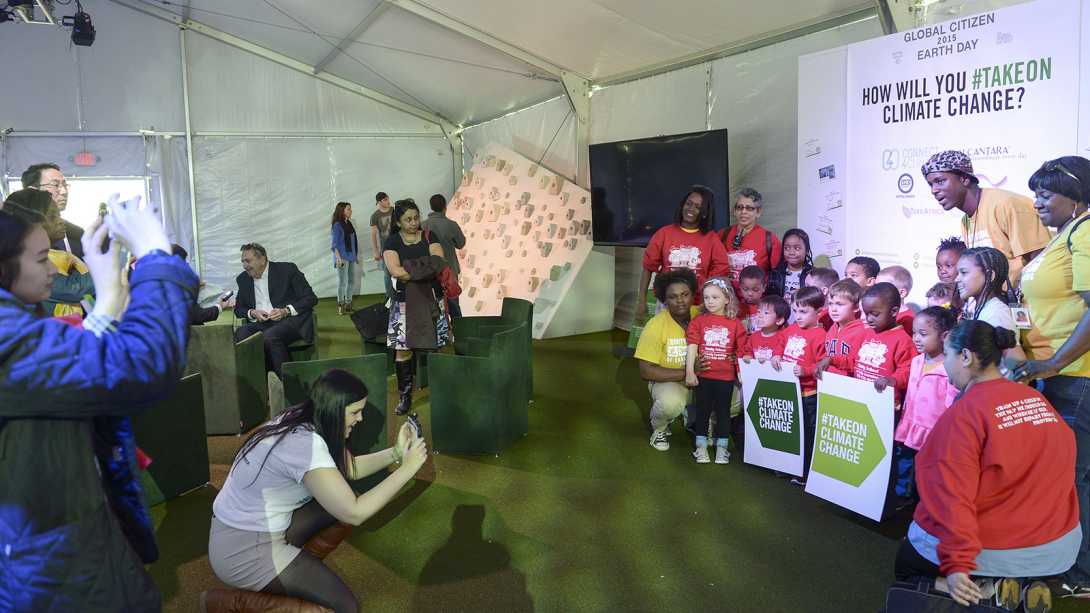
Earth Day Network’s Climate Education Week initiatives in Washington, D.C. have been an absolute success.

Stephon Gabriel won the Voices4Climate Music Video category with A Changing World. And it is the changing world we are living in that lead this 21-years old entrepreneur to try to inspire others to rise up against climate change.
<p style="text-align: center;"><iframe allowfullscreen="" frameborder="0" height="450" src="https://www.youtube.com/embed/Ot4Qnk_hhWw" width="800"></iframe></p>
Hosted by the World Bank Group and supported by Italy’s Ministry of the Environment and Energy Security and Germany’s Federal Ministry for Economic Cooperation and Development, Connect4Climate (C4C) is a global partnership for a livable planet that connects, creates, and communicates to build long-lasting change for future generations.